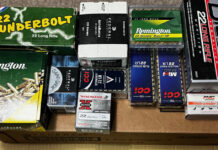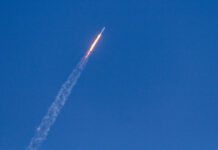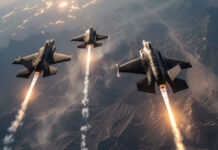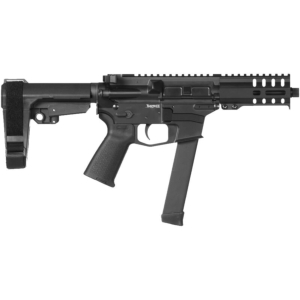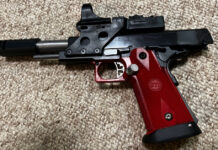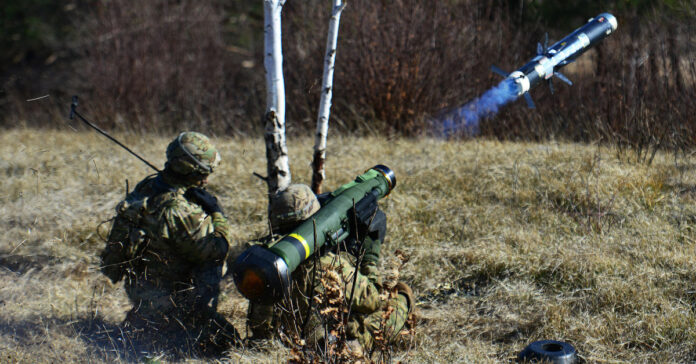
For the first 100 years after their introduction in World War One, tanks were one of the most feared predators on the battlefield. Heavily armored and bristling with weapons, including its powerful main gun, tanks became the heavy cavalry of the Twentieth Century, replacing the armored knight of medieval times.
The war in Ukraine may show the foolishness of relying on heavy armor and tactics from World War II. Light, man-portable antitank rockets are doing more damage in Ukraine than in any prior battle, knocking out hundreds of Russian tanks. (Ukraine claims to have destroyed more than 400 tanks while the independent Oryx website and blog that uses open source photos and video to count destroyed equipment has confirmed 230 but admits there are likely more.) You could say that the U.S./NATO approach to battling the Russian/Warsaw Pact tanks is proving to be successful.
When the United States pushed Iraq out of Kuwait, it was our air power, including the formidable A-10s, that was known for blasting their tanks and armored vehicles like sitting ducks. In the Ukraine theater, it is their drones, which can hold four missiles and reportedly stay aloft (or loiter) for more than 24 hours. But imagine what a few A-10s or Apache attack helicopters could do to a 40-mile convoy?
Given the success of the Ukrainians and these modern weapons against the armored forces of Russia, we must ask ourselves, have tanks become a weapon of the past?
A Thing of the Past?
While the current war has demonstrated the effectiveness of the British NLAW and the American Javelin antitank weapons, the Russian’s poor tactics may also be to blame for the underperformance of their armor. For example, Ukrainian forces are also using artillery to good effect, and artillery is the oldest weapon to be deployed against tanks. Because the Russians are kind enough to line their tanks up single file on highways and roads, rather than attack in a line cross country, the Ukrainians know where to aim their mortars to strike the armored columns.
That does not appear to be the only tactical deficit for the Russians. For example, tanks are best used in conjunction with dismounted troops. The tanks protect the troops and give them added firepower on the battlefield. The troops, in turn, protect the tanks from pesky enemy soldiers with portable anti-tank weapons. When you see the Russian armored columns on video, there is no evidence of dismounted soldiers or fast moving vehicles on their flanks or running patrols in front to flush out any small units of soldiers targeting the tanks. In the video below showing an attack on a column of armored vehicles, the Russian soldiers run away from the site of the missile launch, not towards it. Military doctrine would probably call for them to counterattack and use suppressive fire to keep the enemy from launching another missile.
Counter Measures
Over the past century, armies outfitted tanks with increasingly bigger guns, leading to the other side adding thicker armor which created the need for even bigger guns. This approach is no longer sufficient because many of these new missiles attack from above, hitting the tank where the armor is the weakest. In this modern era, tanks need systems that can shoot down or jam and distract anti-tank munitions. Just as planes and helicopters fire flares to distract the infrared seeker on a ground-to-air missile, tanks need a way to confuse or shoot down antitank missiles.
For example, we have radar that can pinpoint the position of enemy artillery and direct rounds back to that location to take it out. Tanks need similar systems or a drone that loiters above, pinpointing and attacking anything that launches a munition towards the tank. After this war, I bet it gets plenty of R&D investment.
Speaking of investment, keep in mind that Russia’s economy is about the size of Italy’s and their military budget is about one tenth of ours. I expect we’ll keep upping the ante in a manner in which they cannot afford.
What’s Next?
The performance of the Ukrainian military does not spell the end of tank warfare, but it probably spells the end of a battlefield where hundreds of tanks duke it out against each other. It signals the end of an era where having three or five times as many tanks as the opposition guarantees victory. The real lesson may be that large, high-dollar weapon platforms can be taken out by smaller, sophisticated weapons, making war expensive for the attacker’s capital budget as well as their human budget.
If we apply this concept to Taiwan, it suggests that they need anti-ship missiles, both large ones that can attack naval ships dozens of miles away and smaller, man-portable missiles that can target individual landing craft as they approach the shore.
Russia reportedly does not have a lock on the skies because of Ukrainian anti-aircraft missiles, including the U.S.-made Stinger. Again, we see small, man-portable systems that can knock out enemy aircraft, both fixed wing and helicopters, have helped combat the superior numbers of Russia. Taiwan needs to take the concept, apply it to defending an island setting, and run with it.
What can we Learn as Preppers?
For as long as there has been warfare, the defender has had an advantage. As a prepper, you are better off lying low and defending your retreat rather than attacking others.
Hopefully, we as survivors of a disaster will never face tanks, but we may have to face people in cars and trucks, or even stolen National Guard equipment. What is the prepper equivalent of a javelin missile after the SHTF? Maybe it is a .338 Lapua sniper or .50 rifle that kills the enemy at 1,000 yards, when they least expect it?
Make sure you have weapons that can stop vehicles and stop them well before they reach your retreat’s driveway. At the very least, do what the Ukrainians have done and build barriers. When your vehicle-borne attackers are forced to stop and dismount, attack them, seek to disrupt their plans, and kill or disable as many as possible. Then fall back, and repeat at the next barricade, but add a variation, such as attacking from a different direction or with different weapons. Make your attacker pay dearly for every inch of ground and they may break off and retreat. Then you can consider if it is worth the risk of launching a counter attack, perhaps when they are licking their wounds.
Use sound tactics. Don’t be like the Russian troops and bunch up, making yourself an inviting target. If you run from an attack, do it after laying down some suppressive fire and run to cover while a battle buddy covers you. Then cover him with suppressing fire and let him bound past you. Use your superior knowledge of the local area to lead the enemy into a funnel where you or other team members can ambush them.
Seek a Technological Advantage
Use technology in innovative ways to get inside your opponent’s OODA loop and disrupt his thinking and his attack. How? For a few hundred dollars, you can go out and buy a small drone. For a month’s rent, you can buy an even better drone. Either will enhance your surveillance capabilities if deployed correctly. If you know an attack is coming, you can set an ambush.
Look for other ways you can use technology (drones, night vision, range finders, motion detectors, driveway alarms, parabolic microphones, even radios) to give yourself an advantage over an enemy. If the enemy has been living in the field for months with little or no support, even the ability to communicate and coordinate by radio may give you a significant advantage over them.
Another lesson from this war is you cannot expect your enemy to do the smart thing. Someone may attack even when it is not in their best interests to do so. You must prepare for the unexpected.
It’s also important to understand that you cannot deal reasonably and rationally with someone who is unreasonable or irrational. I will leave it up to the professionals to determine if Putin is irrational, but there’s no doubt he is unreasonable. Post-SHTF, the person you are dealing with might not be in full possession of their faculties. They might be off their meds and hearing voices. They may think have God-like powers or have been ordered to eat your children. If you run into a true homicidal maniac or dangerously crazy person in a world without the rule of law, don’t hesitate to put them down permanently.

